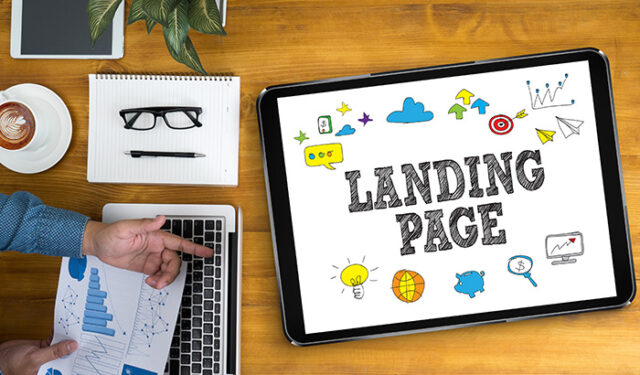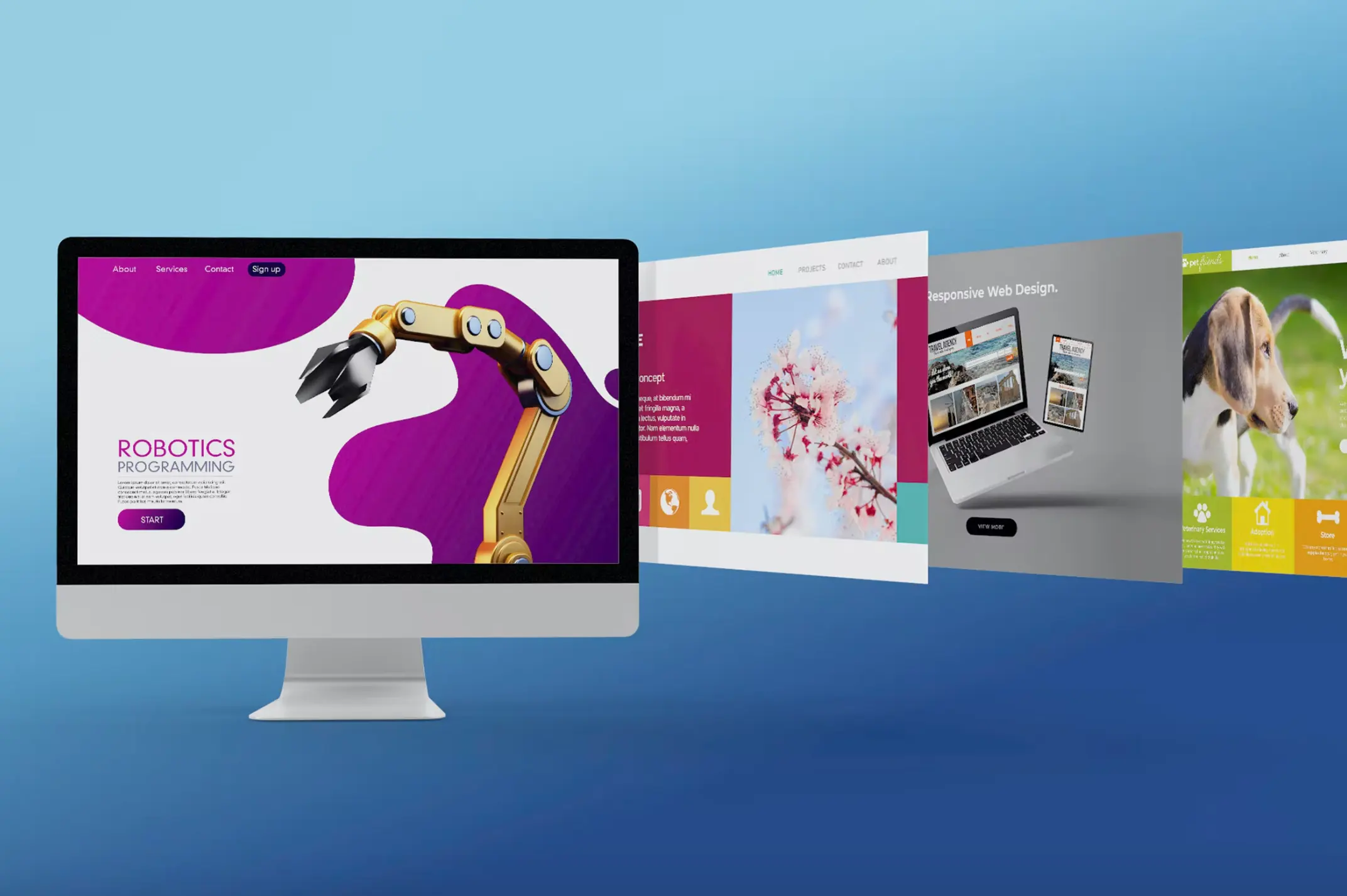A product landing page is a powerful tool that can drive sales, capture leads, and showcase the value of your product. The success of a landing page hinges on its design, messaging, and the overall user experience it delivers. In this blog, we’ll explore the best practices to follow when creating an effective product landing page that converts visitors into customers.

Table of Contents
Toggle1. Focus on a Clear and Compelling Headline
Your headline is the first thing visitors see, and it should immediately convey the core benefit of your product. It needs to grab attention, address the main problem your product solves, and create enough intrigue to encourage visitors to keep reading.
Tips for Creating a Strong Headline:
- Keep it concise: Aim for a headline that is short and to the point, no more than 10-15 words.
- Highlight the value: Focus on the key benefit your product provides, such as “Boost Productivity by 50% with Our Time Management Tool.”
- Use action-oriented language: Drive engagement by starting with action verbs like “Discover,” “Increase,” or “Get.”
A well-crafted headline sets the tone for the rest of the page and ensures visitors stay engaged from the start.
2. Utilize High-Quality Visuals
Images and videos play a crucial role in landing page design by visually communicating the value of your product. High-quality visuals enhance credibility, create a connection with your audience, and help visitors understand your product quickly.
Best Practices for Using Visuals:
- Product Images: Use clear, high-resolution images of your product. Showcase it from multiple angles, and include close-ups of key features.
- Videos: If possible, include a product demo or explainer video. Videos are engaging and can increase conversion rates significantly.
- Contextual Photos: Show the product in use to help visitors visualize themselves benefiting from it, like lifestyle images or user scenarios.
Visual elements not only break up the text but also build trust and help visitors make faster decisions.
3. Craft Persuasive Copy Focused on Benefits
The copy on your landing page should emphasize how your product solves the customer’s problem. Instead of focusing too much on features, highlight the benefits that users will experience.
Tips for Writing Compelling Copy:
- Lead with benefits: Show how your product will improve the customer’s life or business. For example, instead of “This software tracks expenses,” use “Easily manage your finances and save time with automated expense tracking.”
- Be concise: Keep your text clear and to the point. Avoid long paragraphs and use bullet points to highlight key benefits and features.
- Use persuasive language: Phrases like “effortless,” “transform,” and “guaranteed results” can make your product more attractive.
- Address pain points: Identify the problems your audience faces and explain how your product provides the solution.
Your copy should be easy to scan and written with the user in mind, driving them toward the next step—making a purchase or signing up.
4. Incorporate a Strong Call-to-Action (CTA)
A well-placed and compelling call-to-action (CTA) is essential for converting visitors. Your CTA should be clear, action-oriented, and visually distinct from other elements on the page.
CTA Best Practices:
- Keep it simple: Use clear, direct language such as “Buy Now,” “Start Your Free Trial,” or “Get Started.”
- Make it stand out: Use contrasting colors to ensure the CTA button catches the eye. It should stand out from the rest of the page, but still fit with your brand’s design.
- Place it strategically: Position your primary CTA above the fold (visible without scrolling), with additional CTAs placed throughout the page as reminders.
- Use urgency: Create a sense of urgency by including phrases like “Limited Time Offer” or “Only a Few Left in Stock.”
A well-crafted CTA guides users toward conversion and eliminates any uncertainty about what they need to do next.
5. Include Social Proof and Testimonials
Social proof builds trust and reassures potential customers that your product delivers on its promises. Including testimonials, customer reviews, or endorsements from well-known brands can help to establish credibility.
Effective Use of Social Proof:
- Customer Testimonials: Feature quotes from satisfied customers that highlight specific benefits or positive experiences with your product.
- Case Studies: Provide detailed examples of how your product helped solve a particular problem for a customer or business.
- Ratings and Reviews: Display overall ratings or product reviews from third-party platforms like Trustpilot or Google Reviews.
- Logos of Recognized Clients: Showcase logos of well-known brands or partners that have used your product to build trust through association.
Social proof reassures potential customers that your product is trusted by others and can provide the solution they need.
6. Optimize for Mobile Users
With an increasing number of users accessing the web through their mobile devices, it’s crucial to ensure your product landing page is optimized for mobile.
How to Optimize for Mobile:
- Responsive Design: Ensure your landing page adapts to various screen sizes and provides a seamless experience on both desktop and mobile.
- Simplify Navigation: Remove unnecessary elements or distractions that could slow down loading times or make it difficult for mobile users to navigate.
- Shorten Forms: If your landing page requires form submissions, limit the number of fields for mobile users to make it easier and faster to complete.
A mobile-friendly landing page improves the user experience and ensures you capture potential leads from all device types.
7. Ensure Fast Load Times
Page speed is critical for both user experience and SEO. If your landing page takes too long to load, visitors will quickly abandon it, leading to lost conversions.
Tips for Improving Load Times:
- Compress images and videos to reduce their file size without compromising quality.
- Use a content delivery network (CDN) to speed up the delivery of your content.
- Minimize the use of heavy scripts and unnecessary animations.
A fast-loading page keeps visitors engaged and reduces bounce rates, leading to higher conversions.
8. A/B Test and Continuously Optimize
Even with a well-designed landing page, there’s always room for improvement. A/B testing allows you to experiment with different elements on your landing page to determine what works best for your audience.
A/B Testing Ideas:
- Test different headlines to see which one resonates most with your audience.
- Experiment with different CTA button colors or placements to increase click-through rates.
- Try variations in your copy, such as focusing more on features or benefits.
Use the data from these tests to make informed decisions and optimize your landing page for maximum conversion rates.
Conclusion
Creating an effective product landing page requires a combination of strategic design, persuasive copy, and optimized user experience. By focusing on clear messaging, high-quality visuals, strong CTAs, social proof, and continuous optimization, you can build a landing page that attracts visitors and turns them into loyal customers. Start implementing these best practices today and watch your conversions soar!


No responses yet